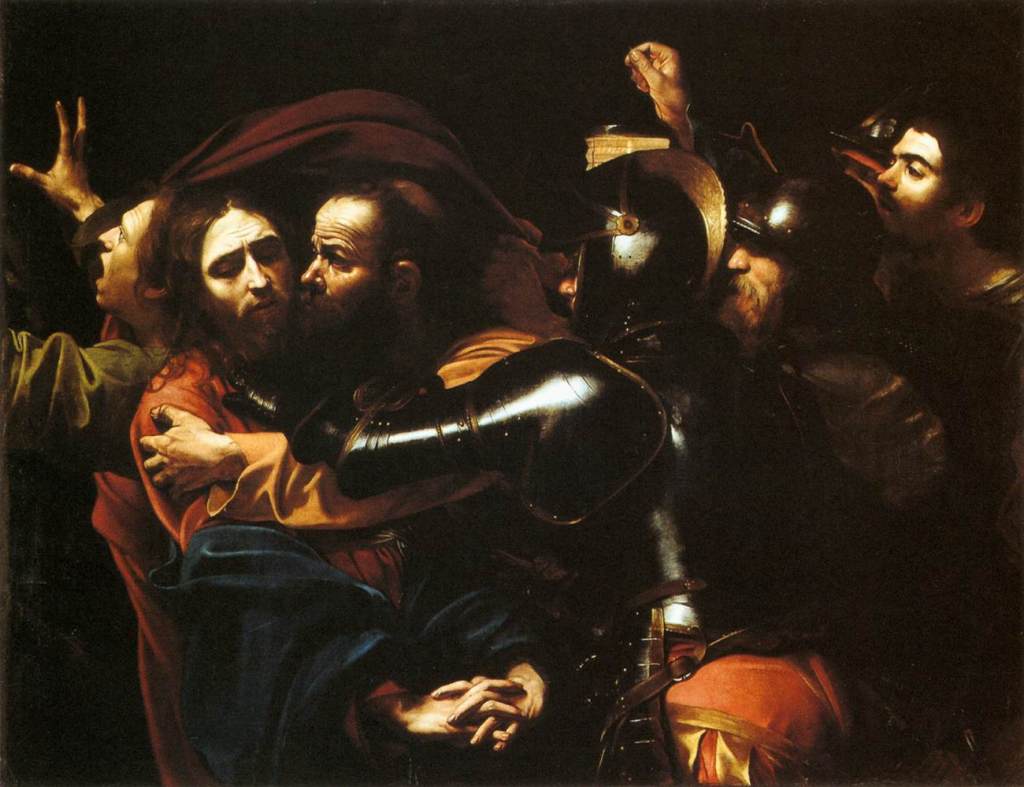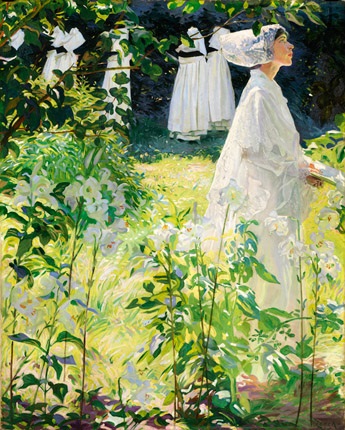Lines of Vision: Irish Writers on Art
National Gallery, Dublin
8 October 2014 – 12 April 2015
I wasn’t planning on writing a review for this exhibition but I wanted to give it a quick mention as it was so unlike anything I had been to before. The Millenium Wing of the National Gallery in Dublin has been taken over by 56 Irish writers and poets, who have selected their favourite paintings from the collection. This genius idea brings out works not usually displayed, as well as giving a new perspective to well-known masterpieces. I came across some beautiful works, many of them by Irish artists, and left the gallery feeling like I had much to learn about the new artists I had discovered there.
Firstly, I was primarily visiting to see Caravaggio‘s The Taking of Christ (1602), my most favourite painting of all time in the world ever. In my eyes it is perfection; it is realistic, expressive, immersive, interesting and beautiful. When this was painted Caravaggio was at the height of his fame. He had a reliable and wealthy patron, the Marquis Ciriaco Mattei for whom this was painted, and was in demand throughout Rome. Compositionally, it is totally radical. You can’t really grasp it’s originality in today’s world, but just looking at any other images of this subject, or indeed any religious subject, is like looking at something from another civilisation. This really was modern in a groundbreaking sense. Comparing this interpretations by Giotto (Kiss of Judas, 1304-06), Duccio (part of his Maestà of 1308-1311) or Fra Angelico (The Capture of Christ, 1440) show just how much Caravaggio was going against the grain of tradition. Biblical art was functional, it had to visually tell stories, to be readable for the illiterate. Characters and settings needed to be instantly identifiable, and so artists of the Trecento onwards would copy compositional formats established by others. If you look at the examples above they are all similar. However, in Caravaggio’s depiction of Christ’s arrest we are included in the story, a part of the rabble depicted before us. It is chaotic and noisy, St John the Evangelist to the far left flees screaming, we can imagine the clanking of the guard’s armour. I don’t want to turn this into a lengthy analysis of one painting (or rather I do but I do not want to bore you), but it really is a stunning work of art. Irish author John Banville agrees, and points out something that I hadn’t really considered before. The seven figures are squeezed in to the canvas, leaving virtually no space for a background. And what little backdrop there is has been obscured by the dense darkness, untouched by the dimmed light. However we do not need a setting, we know it is the garden of Gethsemane. This seems a simple concept, but it hadn’t been done before. This is typical of Caravaggio, breaking the rules and stripping back a subject to the core elements.

The Taking of Christ (c.1602) by Michelangelo Merisi da Caravaggio, oil on canvas, National Gallery, Dublin
Moving on, the other stand out painting for me was A Convent Garden, Brittany (c.1913) by William Leech (1881-1968). It is such a wonderfully light and bright image, you almost feel as though you standing in the warm sunlight. The sisters of the convent of the Holy Ghost in Concarneau in black and white are busy in the background. Our view point is through a flowering plant, our focus is on a girl in white surrounded by an ethereal glow. Looking up close you can see the light filtering through the lace of her dress. The model is the artist’s wife, playing the role of a novice. Dressed in a ceremonial Breton wedding dress worn by novices before taking vows and committing themselves to God. From afar the painting looks highly realistic, but up close shapes are formed by daubs of colour, particularly visible in the plants. Poet Medbh McGuckian tells us of the influence of the Post Impressionists on Leech’s work, which I am definitely going to look into at a later date.
Other highlights of this exhibition are El Greco’s Saint Francis Receiving the Stigmata, Rembrandt‘s Landscape with the Rest on the Flight into Egypt (1647), and The Opening of the Sixth Seal (1828) by Francis Danby. Lines of Vision is an innovative and accessible way to look at art, and captions from literary professionals are a welcome change to the usual format of captions. And the chance to see personally selected treasures from Ireland’s vast national collection in one room is an unmissable opportunity.
http://www.nationalgallery.ie/whatson/Exhibitions/Lines_of_Vision.aspx

